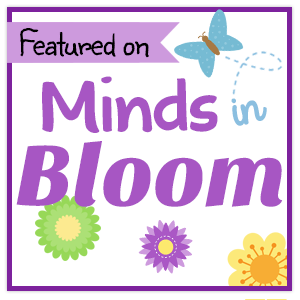Hi wonderful new teachers! I am so excited for you, and just a little jealous, that you are beginning your career as an educator. Oh, to step back and tell that new teacher that I once was some of what I've learned along the way. I hope that some of these tips will help to make your first year just a little easier and more fun.
Being a teacher is very challenging these days, and staying the course is even more challenging in the face of all the current initiatives. Please, please, please stay strong and don't give up the first time (or hundredth time) you think you want to. The next smile and thank you from a student whose life you have changed for the better will make it so worth your while. There truly is no job or calling more rewarding than teaching. Congratulations on the courageous choice you have made to be a teacher!
I remember my first day as I stood in the doorway to my new beautifully decorated (way before Pinterest) classroom of an inner-city school, wearing high heels, pearls, and a too short for teaching tiny dress (I'll get to that later!), anxiously awaiting my very first fifth graders. Nervous doesn't even begin to describe it. The clearest memory I have of that day was when I invited one of my new students to have a seat (which I had ever so lovingly prepared for her and her classmates), she informed me that she didn't have to anything other than remain a member of her cultural group and die. Lovely.
It went downhill from there. Fifth graders in chaos everywhere, little me trying desperately to get control, and the only ones smiling were the kids who had come that day just to tear it up. I had been warned not to let them see me smile until Christmas.
Wrong! Your smile is the most critical tool in your teacher toolbox. Use it often. You won't run out of smiles, and they can be counted on to turn many negative situations around. Even classroom chaos. Try looking around the room and smiling if you find yourself in a situation like I had on my first day. Even laugh. Don't say anything. Raising your voice won't help anyway. Try it. Little by little, they will stop, look at you. and wonder what you're smiling at. Not the effect the little troublemakers were hoping for. Instilling wonder (even if they wonder if you cray-cray) is the first step in getting them to wonder about all of the amazing things you want them to learn!
Keep smiling throughout your teaching days. Smile at parents in the morning. It will reassure them, and they will assume that you know what you're doing and have likely done it before! Smile at your students. They might be nervous too, and your smile will be contagious and will calm them. Smile at your coworkers. They will wonder what you're up to. Then show them!
Tip #2: Pack Up the Bar Clothes
You won't be needing them anymore. You might feel like drinking after work, but you're not going anywhere other than home in exhaustion and to a pile of papers and notebooks to review while renewing your action plan for tomorrow.
The new teacher that I was, and some of the new teachers that I've met over the years have thought that tight or short clothing, thong underwear that shows through clothing, exposed midriffs, low cut tops, and high heels (some of which we didn't have when I started teaching - I'll let you guess!) were "dress-up" clothes and that you should dress up for work. Of course you should dress up for teaching, but please don't arrive at school looking as if you are arriving at a party and hoping to meet someone. (If you are now screaming at me for this tip, please feel free to fast forward to tip #3. This tip is obviously not meant for everyone. But since I have seen this mistake as recently as last school year, please give it some consideration if it speaks to you at all.)
So clothing meant for adult parties frequented by single people is probably not appropriate for school. You don't have to spend your entire salary on clothing though. Two or three pairs of nice black pants, a few cute but not sexy tops, and a couple of cardigans may sound boring, but it can get you through many school days and keep you looking smooth and professional. Try wearing flat shoes. They are very helpful when racing from desk to desk or room to room as you will often do during your day. And pants are soooo much easier to sit criss-cross applesauce in when you join the kids on the floor!
Tip #3: Listen More Than You Talk
You will likely be involved in many PD situations, team meetings, PLCs and PLTs as part of your new job. Keep listening. You will soon learn who holds the power in the school, who can get a job done when it needs to be done, and who you can turn to when you need help. There will be many years for you to offer advice or a helping hand. For the first year, or at least the first few months, just listen. I promise you won't regret it.
At team planning meetings, you may have the perfect idea that will save time, delight parents, and captivate kids, but save it until everyone else has spoken. Offer it up little by little, not all at once. Your teammates will be more likely to become your friends if you don't overwhelm them all at once with EVERYTHING you know and can do. You want to be part of their team, not appear as a threat to them.
You will probably figure this out before the first day, but just in case.... Make friends with the secretary and/or clerk in the front office and the custodians - especially the night custodian. The night custodian can dash in and out and empty your trash, or he/she can put your room back together for you, assemble furniture, move heavy things, and even draw little cartoon notes on the board for your kids to see the next day. Friends are like that.

Tip #4: Fake It 'Till You Make It
Of course you want to start smiling immediately, and keep it up all year. You also want to appear cool, calm, collected, and knowledgeable in front of your students. Know your subject matter inside and out before you step in front of your class to deliver a lesson. If you don't know the answer to something, admit it and promise to help them find the answer. (Except for inappropriate questions about sex or religion. For those, say, "That's a really good question. I think you should ask that one at home." Yes, I've had to use this response many times over the many years I taught!)
Tip #5: Track Everything
I learned this in Weight Watchers! Ha! Yes, I'm back there after trying everything else that didn't work. You need to track everything. Don't lie to yourself. You won't believe you. The lady with the scale won't believe you either. Trust me.
Never find yourself sitting in an evaluation meeting or a parent conference without all necessary data and artifacts right there in front of you. Be ready for all questions that might be coming your way. Anticipate them and prepare. You can't possibly memorize every piece of data about every student in your class, but you certainly can prepare a binder that will help you to find all that information quickly and efficiently. Having photos, student samples, and narrative observations that you've made along the way are also very impressive. They will all make you look like you know what you are doing. You DO know what you are doing, but will be surrounded by people and initiatives requiring you to PROVE IT. A binder is an easy way to do this. Try sitting at your desk for just fifteen minutes each day after school and writing a few sentences about two or three kids that you noticed doing something special (or even not so special) that day. Keep these notes in your binder. Parents and administrators will be impressed.
Again, I wish you the most life-changing, magical career ever! I know that your impact on the future will be huge! Thank you for taking on the hardest job for the most precious of rewards. Congratulations, new teacher! Get out there and make a difference!
You might also like:
For more ideas from our Sharing is Caring Blogging Cooperative, visit these great blog posts!






































































